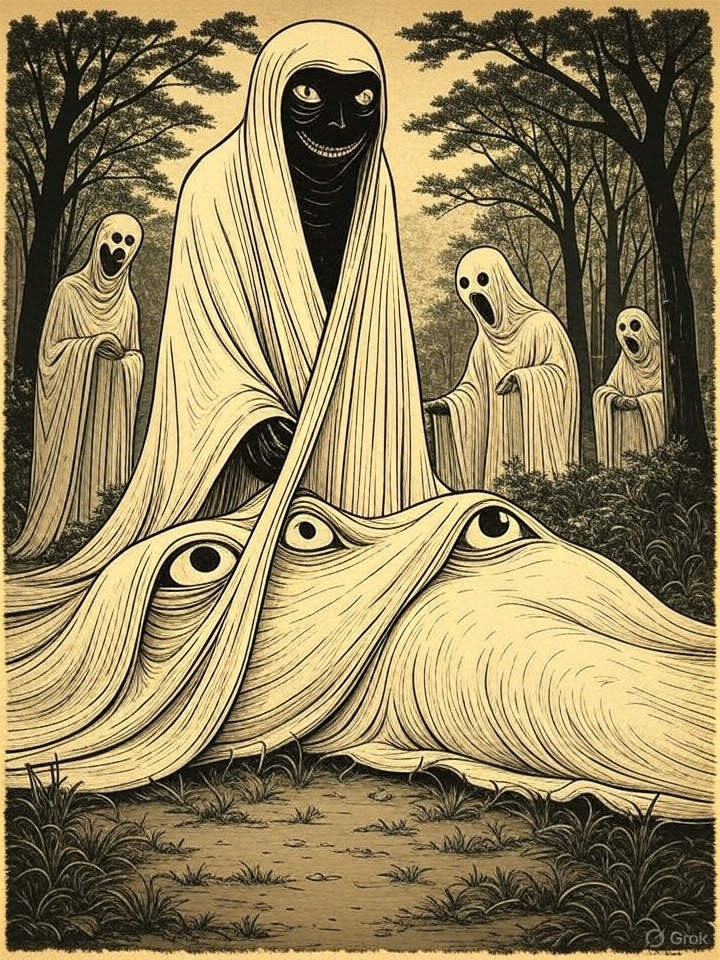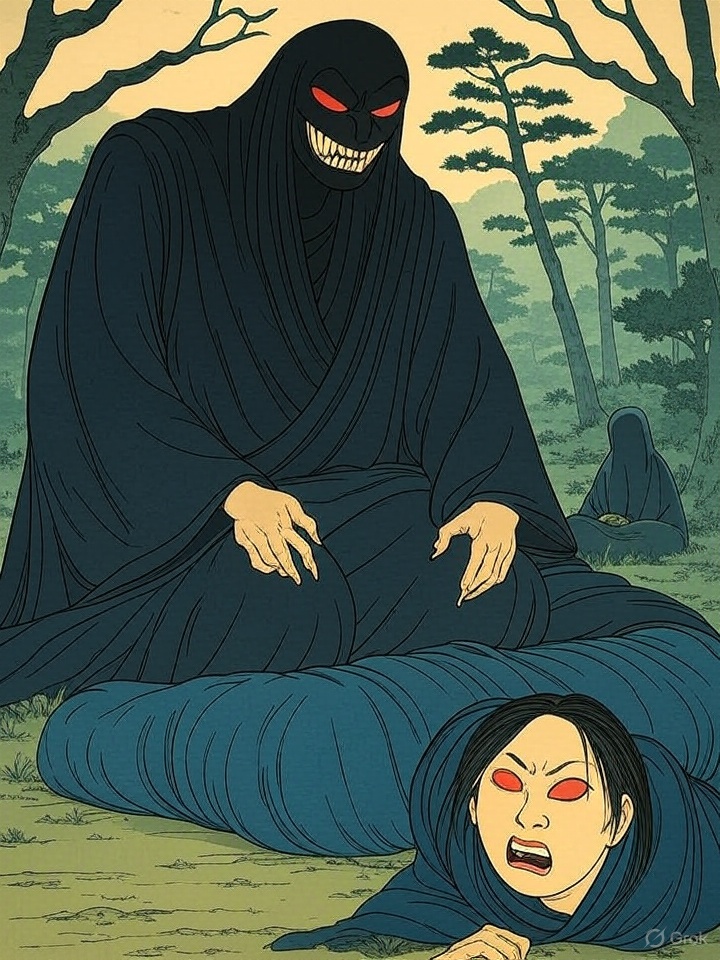Name Meaning
Overview
\n
Ittan-momen (一反木綿) translates to “one tan of cotton,” a traditional length of cloth (around 10 meters) used in textile production.
- Ittan (一反) = a roll of cloth
- Momen (木綿) = cotton
Origin
- Originates from Kagoshima Prefecture in southern Kyūshū.
- Passed down through regional ghost stories and folklore.
- First recorded in the Edo period, with popularity in postwar yokai literature.
Appearance
- Appears as a long, white strip of cloth flying through the sky.
- Moves like a bird or snake, undulating through the air.
- Often portrayed with a slight face or eyes, though typically faceless.
Behavior & Myths
- Flies silently at night, seeking lone travelers.
- Wraps tightly around the victim’s face to suffocate or blind them.
- Sometimes behaves mischievously without lethal intent.
Symbolism
- Represents everyday objects turning deadly or unnatural.
- Warns against walking alone at night in isolated regions.
- Embodies fear of the unseen and suffocating danger.



